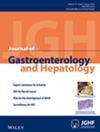Clinicopathological Features of Esophageal Squamous Cell Carcinomas in Patients With No History of Tobacco Smoking or Alcohol Consumption
Abstract
Background and Aim
Esophageal squamous cell carcinoma (ESCC) in patients with no history of tobacco smoking or alcohol consumption accounts for approximately 5% of all ESCCs. This study aimed to clarify the clinicopathological features of superficial ESCCs in patients with no history of tobacco smoking or alcohol consumption.
Methods
Clinical data and pathological features of 108 superficial ESCCs in endoscopic submucosal dissection (ESD) specimens obtained from 102 patients with no history of tobacco smoking or alcohol consumption (NTNA group) were reviewed. For comparison, the clinicopathological features of 767 superficial ESCCs in ESD specimens from 544 patients with history of tobacco smoking and alcohol consumption (TA group) were also reviewed. Factors analyzed included age, sex, synchronous/metachronous cancer, gastroesophageal reflux disease (GERD), tumor size, tumor site, macroscopic type, Lugol-voiding lesion (LVL) grade, invasion depth, and lymphovascular invasion. LVLs were graded as A (no lesions), B (1–9 lesions), and C (> 9 lesions).
Results
The univariate analysis revealed that female predominance (p < 0.01), absence of synchronous/metachronous cancer (p < 0.01), grade A LVLs (p < 0.01), presence of GERD (p < 0.01), tumor location in the middle thoracic esophagus (p < 0.05), tumor location at the posterior wall (p < 0.05), and 0–IIa macroscopic type (p < 0.01) were significantly more frequently observed in NTNA group than in TA group. Multivariate analysis identified female predominance (OR 68.2, p < 0.001), LVL grade A (OR 50.6, p < 0.001), and 0–IIa macroscopic type (OR 7.2, p < 0.001) as significant features in the NTNA group.
Conclusions
This study demonstrated the unique clinicopathological features of ESCCs in patients with NTNA.

 求助内容:
求助内容: 应助结果提醒方式:
应助结果提醒方式:


